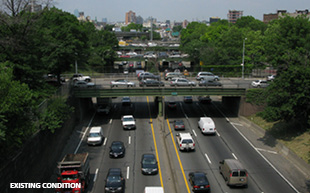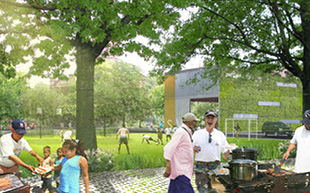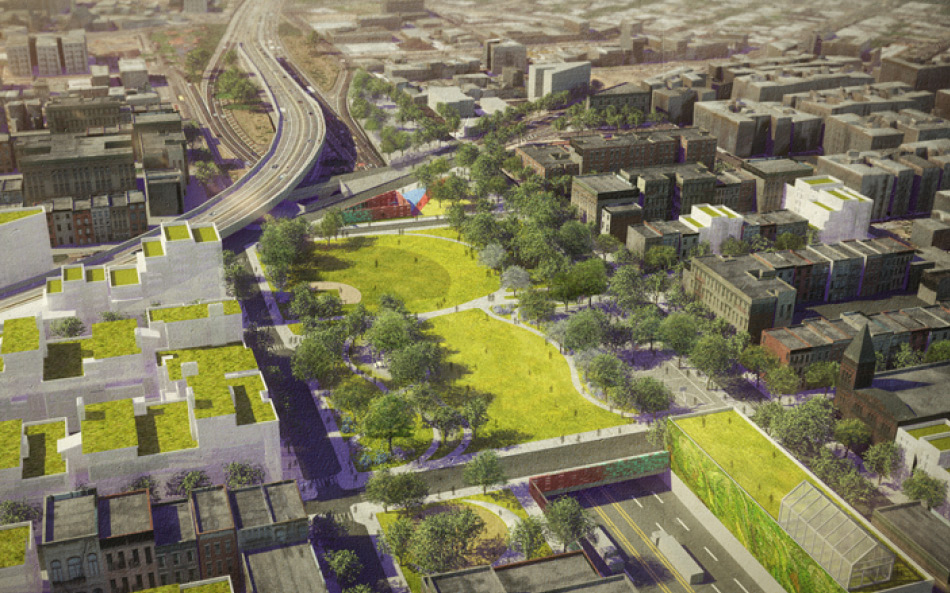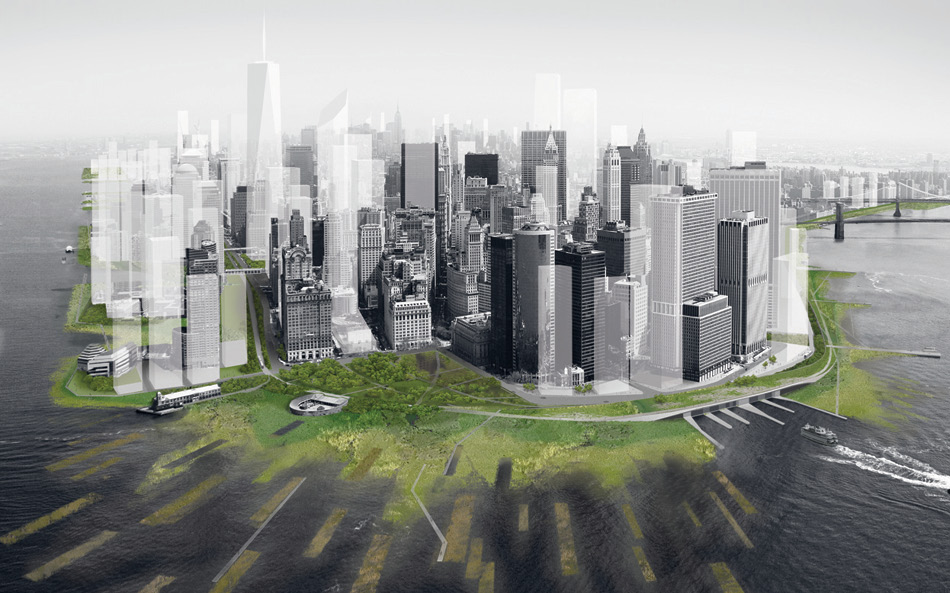This February, SVA’s D-crit program invited designer and architect Susannah Drake to show her plans and visions for a permeable, resilient, post-Sandy New York.

Drake, Principal of dlandstudio, shared her firm’s current and future projects from conception to funding to implementation. With transparency and sustained idealism, Drake presented her firm’s urban sponges, parks, and “infra-sutures” that aim to heal past wounds and current conflicts caused by massive city projects–like Moses’s BQE, and by “acts of god” like Sandy.

Natural disasters play a part in the wounded city, too. Drake highlighted some statistics to illustrate the necessity of preparation. She reminded the audience of mostly SVA graduate students that 40 percent of the world’s population currently lives within 100 kilometers of a coastline. Further, current delta sustenance crops like rice will become inundated with salt water in future swells, making life nearly impossible for an even higher percentage of humans dependent on these crops.

Drake then focused in on NYC-centric issues that her firm can try to address with resilient, healing structures. One such issue is gang wars on either side of the BQE. Discussions of dlandstudio’s d in allegedly already brought together old, opposing heads of Puerto Rican and Dominican neighborhood groups. During her talk, Drake suggested that the park will further alleviate tension by blurring strict, Moses-imposed territory lines with a physical space for positive, continuous community interaction.

On another field, dlandstudio’s capture tubes, highway planters, and pop-up swales level with New York’s dirtiest: combined sewer overflows (CSOs) and detritus. but they have to be approved by no fewer than 14 city and national agencies before they can be put into place. Here is what the Gowanus sponge park will look like, with a description of its environmental benefits below:
“The park is designed as a working landscape that improves the environment of the canal over time. This innovative plan proposes strategies to divert excess storm water run-off for use in the public park along the canal, reducing the input of rain water into the sewer system. The plants and engineered soils included in our design draw heavy metals and biological toxins out of contaminated water. Proposed floating remediation wetlands incorporate a mixture of aquatic organisms that absorb or break down organic toxins, heavy metals, and biological contaminants from sewage… ”
Aside from man-made wounds, the city has suffered and will suffer the effects of future natural disasters. The talk was given in the context of preparation post-Sandy, and in the Q and A section Drake was asked to share her thoughts on storm barriers. “We don’t know if they’d work,” she said, arguing that we’d need to study the effects of storm barriers at our waterfronts further. “If you put barriers in,” she points out, “water still has to go somewhere.” Drake shared, by way of example, a vision of Queens separating from Manhattan.
“On the other had,” she continued, “an ecological approach involving planting and expanding tiny barrier islands can happen now. These should grow, not deteriorate, over time…” (The current barrier islands designed by the Army Corps of Engineers do deteriorate).
Drake’s studio participated in MoMA’s 2010 Rising Currents exhibition, which showcased solutions for rising sea levels in New York City. As her firm did then, Drake explained again this year why a multilayered, ecological approach of gradual grass and curves is the best way to address Manhattan’s flattened, expanded coastlines.
Drake added that in addition to barrier islands, edging away from redevelopment in certain areas hit by Sandy, like the South Street Seaport, represents sound planning: “Cuomo’s plan to disallow redevelopment in low-lying areas like the South St. Seaport is wise. Bloomberg can’t back down from waterfront development because he’s deeply tied to it. However Cuomo doesn’t have these real-estate obligations.”
Drake described other projects, and answered other questions, always returning to the image of stitching together or rebuilding a wounded city. These medical metaphors leave room for questions. After the talk was over, a few of the participants expressed disapproval of Drake’s imagery and idealism without addressing much about how communities and individuals are actually affected in the areas where her firm works.
Images: dlandstudio

